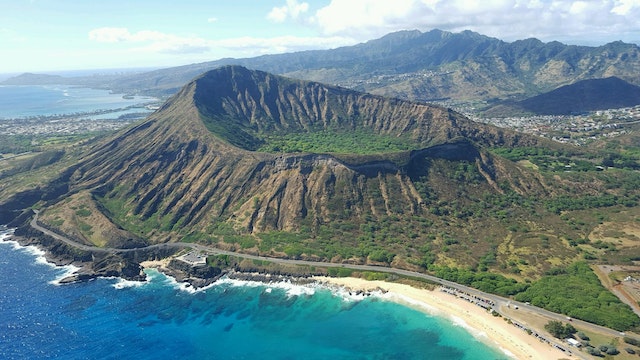10 Fascinating Volcano Facts for Kids 2024 (Fun Facts)
Have you ever wondered what’s cooking beneath the Earth’s surface? Well, get ready to dive into the fascinating world of volcanoes, where molten rock and fiery explosions create some of the most amazing spectacles on our planet.

Buckle up for a volcanic adventure as we reveal 10 mind-blowing facts that will leave you in awe!
10 Facts About Volcanoes
1. Volcanoes are Nature’s Fiery Vents

Volcanoes are like Earth’s secret chimneys, where super-hot melted rock called magma bursts out. Upon eruption, magma can give birth to spectacular lava flows, ash clouds, and pyroclastic surges, forever shaping the landscape.
2. Volcano Gets its Name from the Gods
The word “volcano” comes from Vulcan, the ancient Roman god of flames and forge. It’s a cool connection to ancient Roman mythology! So, when volcanoes erupt, they’re basically putting on a fiery show worthy of a god!
3. Volcanoes Have Different Moods

Volcanoes can be awake, taking a nap, and sleeping for a really long time. The awake ones are active volcanoes, and they might shoot out lava at any time. The ones that are taking a nap are dormant volcanoes that haven’t erupted in a while, but who knows when they might wake up! And the ones that have been sleeping for thousands of years are extinct volcanoes that have finished their fiery tales.
4. The Lava has Magic
Deep underground, magma turns into lava when it pops out, creating rivers of glowing, liquid rock. It’s like a magical transformation from rock to a glowing, molten river. As lava cools down, it turns into solid rock, leaving behind stunning landscapes.
5. It can be Hotter Than the Hottest

Lava can be hotter than your oven, reaching a sizzling 2,282 degrees Fahrenheit (1,250 degrees Celsius). That’s so hot that it can melt almost anything in its path. No wonder volcanoes are known for their fiery explosions.
6. There are Volcanoes Beyond the Earth
Volcanoes are like planetary fireworks They are not only on Earth, but even Mars has them! The biggest volcano in the whole solar system is actually on Mars.
7. Volcanoes Make a “Ring of Fire”

There are about 1,500 active volcanoes around the world, often hanging out in a special club called the “Ring of Fire” around the Pacific Ocean making it a hotspot for volcanic action. It’s like the Earth’s very own adventure playground!
8. Earth’s Tallest Volcano is in Hawaii

Mauna Loa in Hawaii is Earth’s tallest volcano, taller than Mount Everest when measured from its base underwater! It’s like a giant friend guarding the beautiful islands of Hawaii.
9. Tectonic Plates Dance with the Earth’s Surface
Volcanoes like to dance with the ground. Underneath the ground, there are these huge puzzle pieces called tectonic plates. When these plates move and shake, it’s like the Earth is throwing a dance party. And sometimes, this party creates earthquakes and volcanic eruptions that rock our world!
10. Volcanoes create Ash and Glassy Beauty

Volcanoes don’t just spew out lava and rock, when they erupt, they can also create something as delicate as artwork, volcanic ash and glass-like tiny, super-fine particles floating in the air like fairy dust. And sometimes, the lava cools down so quickly that it forms glassy treasures called obsidian. It’s like Earth’s way of showing off its artistic skills through nature’s own masterpieces!
FAQs
What causes volcanoes to erupt?
Volcanic eruptions occur when molten magma rises and pressure builds up beneath the Earth’s surface, forcing magma to burst out.
Are all volcanic eruptions dangerous?
No, the danger level varies. Some eruptions are mild, mainly producing lava flows, while others are explosive, posing significant risks to people and the environment.
Can volcanoes be predicted or controlled?
Predicting eruptions precisely is challenging, and there’s no technology to control them. Monitoring and preparedness are key to minimizing their impact.
How do volcanoes affect the environment?
Volcanoes can enrich soil but also release harmful gases, disrupt air travel, and alter landscapes. The impact depends on eruption scale and frequency.
Conclusion
From the world’s origin to the movements of tectonic plates, volcanoes hold the key to understanding our planet’s hidden stories. They teach us about the interplay of forces that shape our environment. So the next time you see a volcano on TV or in a book, remember these awesome facts that make these mountains of fire so incredible!
